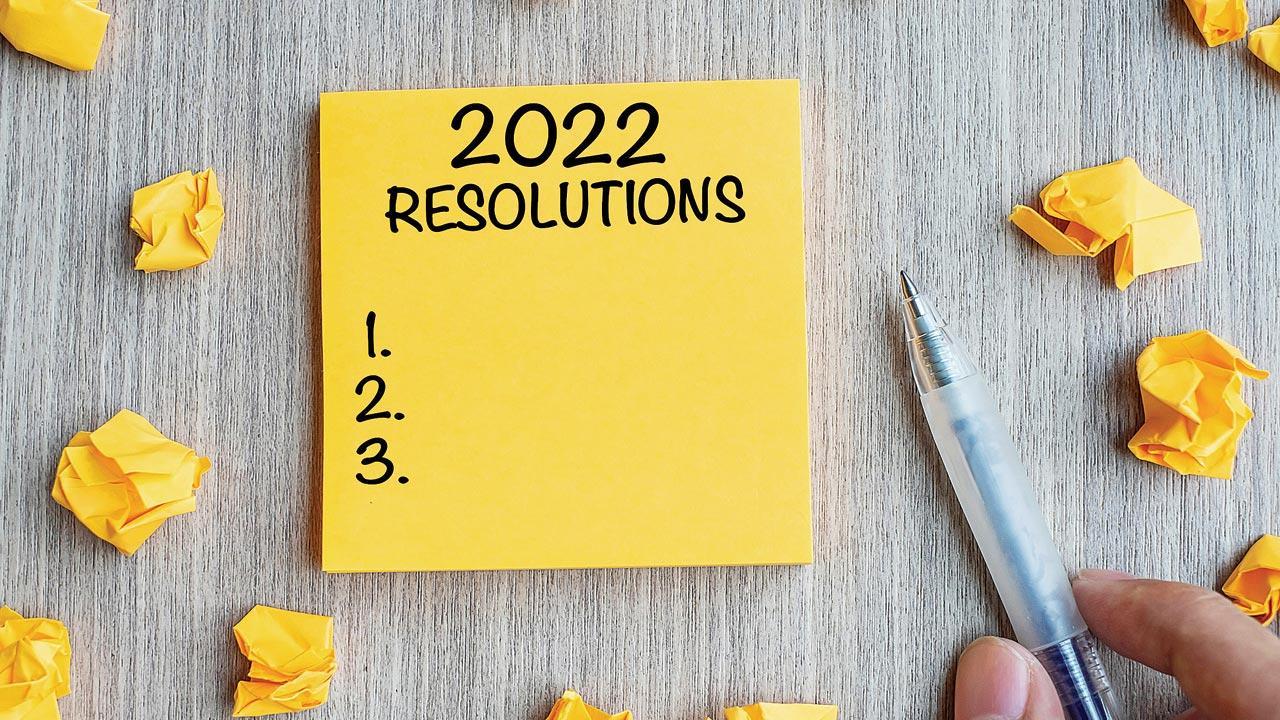With self-love and mindfulness taking precedence in the pandemic, people are replacing ‘unrealistic’ NY resolutions with a more honest wish list

Anti-resolutions and ‘to-be’ lists can help people achieve their goals better than traditional resolutions, say experts
If you are someone who does not believe in the idea of New Year resolutions, you might want to know what’s happening on the other side of this trend. The anti-resolution and “to-be” movement are picking up over the last two years, with people choosing to focus on the good parts of themselves, instead of attempting to turn a new leaf.
ADVERTISEMENT
While “to-be” is a different way of approaching each day and goals, focusing on what parts of yourself you want to bring forward, anti-resolution is a commitment to stop doing something that has been detrimental to you.
 Peak performer strategist Arfeen Khan feels that most people quit their resolutions mid-way because “their real motivation is never clear”
Peak performer strategist Arfeen Khan feels that most people quit their resolutions mid-way because “their real motivation is never clear”
According to Mumbai-based psychologist Purvi Shah, this is a better step forward, “because around 70 per cent of the time, resolutions fail”. “People tend to set very unrealistic goals, which they aren’t able to meet because it seems like self pressure ,” she says.
Peak performer strategist, life and business coach and serial entrepreneur Arfeen Khan says the real reason why people quit their resolutions mid-way is because “their real motivation is never clear. They only do it out of enthusiasm”. He says that “to-be” lists are mindful resolutions, and will always work. Elaborating, he says, “If I make a resolution to lose 10 kg this year, the action that I would have to take is to go to the gym. But if my mind is not strong enough and if I don’t have the focus and determination to complete it, even the world’s best trainer won’t help me achieve that goal.” To-be lists, says Khan, allows one to reframe the resolution. So, instead of focusing on the goal of shedding extra kilos, you try and become “more focused and resilient”. “You need to think of what kind of person you want to become in order to go to the gym every day.”
 Purvi Shah and Sarang Chaudhar
Purvi Shah and Sarang Chaudhar
Shah, who is also the founder of the mental health and life skills counselling organisation, iPurviShah, says that in the last two years of the lockdown, “mindfulness and self-love” have taken precedence. “People want more time for themselves to sit, breathe and do nothing. From that perspective, the idea of resolutions has faded, because no one wants to set materialistic goals. They do not want to feel anxious.”
Mumbai-based Sarang Chaudhar, 23, who is currently pursuing his MBA from Xavier’s School of Management (XLRI), has kept resolutions in the past, but says the exercise would drain him out. These days, he is focusing on being more honest with himself. “I don’t know how to measure the success of this, but I do believe I have become a better person. I just want to grow without any pressure of achieving a benchmark,” he says. This year, he hopes to be “kinder and more compassionate, but I will put myself first.”
Khan says “to-be’ lists are a phenomenal way of transforming oneself. “But, they should be character-driven and not outcome-based,” he feels, adding, “With the ‘to-be’ list, always add an action otherwise it would be a dead list. Instead of saying, ‘I have to be disciplined, say, I have to be disciplined by getting up at 6 am every morning’. If there is no action, the list would be just like one of those positive-thinking lists.”
How to make an effective ‘to-be’ list
1. Be aware of the underlying reason
2. Back your goal with compelling reasons
3. Be aware of your strengths, weaknesses and fears
4. Your list should be character-driven and not outcome-based
5. Add specific actions to your list
6. Avoid negative words
 Subscribe today by clicking the link and stay updated with the latest news!" Click here!
Subscribe today by clicking the link and stay updated with the latest news!" Click here!







